Looking for a few beautiful annual flowers to attract honeybees to your landscape?
In order for a garden to be successful and productive, it needs to have pollinators nearby. And one of the best pollinators around is the workhorse honeybee.
While some plants can self pollinate, most rely on pollinators to transfer pollen from one flower to another. Without pollinators like honeybees, there would be few flowers, hardly any fruit, and little to no vegetables.
Honeybees and other pollinators land on a male flower that is full of pollen. This pollen sticks to their tiny bodies and legs. The honeybee then travels to other flowers nearby, likely transferring the pollen to female flowers along the way. Once the pollen is transferred, fruit and seeds can then be produced.
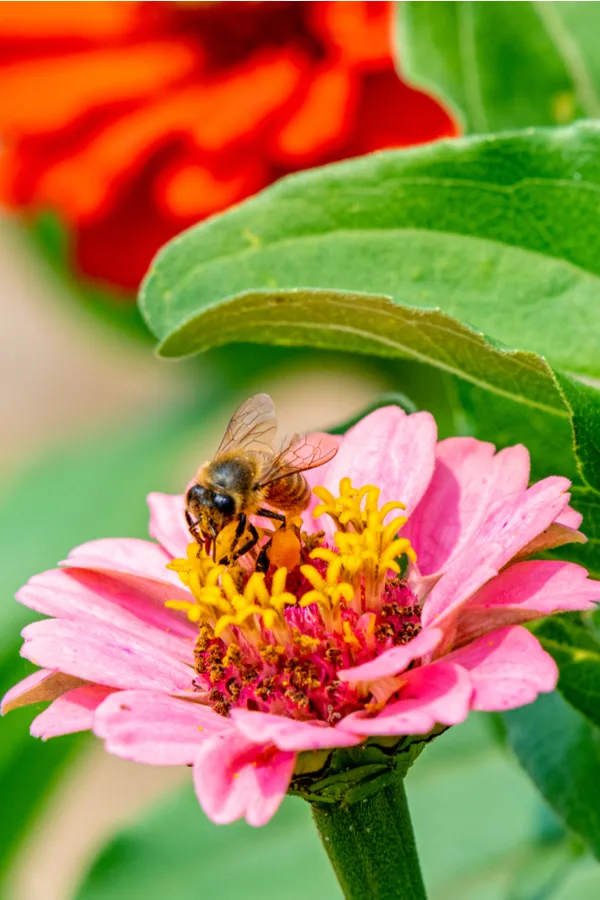
Honeybees will actually use flowers in two ways. They not only help to transfer pollen from flower to flower, but they also consume the nectar as well. This makes flowers a vital part of a honeybee’s life source.
While most all flowers can attract honeybees, there are definitely a few top choices they prefer. Adding in a few of their favorite flowers is a great way to encourage them to visit your property. Thankfully, it’s easy to incorporate any of the below annuals into existing gardens and raised beds. Most of these flowers can even be put in pots and containers as well.
6 Annual Flowers That Attract Honeybees
Whether you plant only one type of these annuals, or a variety of those listed, the bees will appreciate the food source either way!
Petunias – Six Annual Flowers That Attract Honeybees
Petunias are one of the most popular summer-blooming annual flowers available. You can find these colorful blooms in almost any color and style. From stunning trailing varieties to wave petunias, there is a variety for your hanging basket, container, or just about any location within your garden space.
Petunias feature trumpet-like blooms that are a favorite among pollinators, including butterflies and hummingbirds. Honeybees are mostly attracted to petunias because of their bright colors and abundance of nectar. Choose varieties that have bloom colors that appeal the best to honeybees.
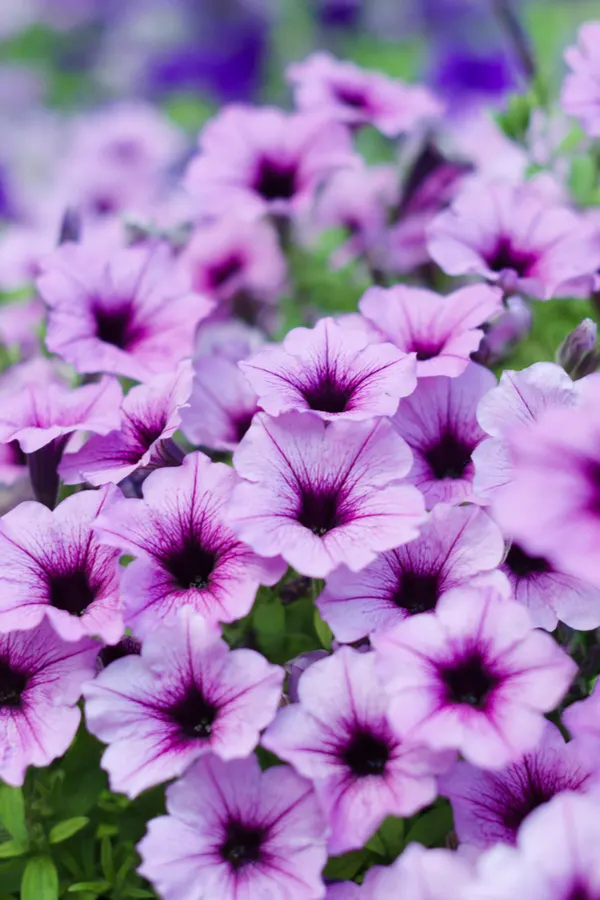
You can usually find petunias started in flats at a local garden center in early spring. If preferred, you can start seeds indoors 8 to 10 weeks before your last frost. Be sure to move petunias inside or protect them in case of a late frost.
Cosmos – Six Annual Flowers That Attract Honeybees
These beautiful flowers are easy to grow from seed. They will also provide an abundance of blooms from late spring until the first frost. The best part is that they can go from seed to blooming in just two short months.
In addition, cosmos are both deer and drought resistant. That makes them the perfect addition to garden borders or along the edge of your property. And while deer might overlook these annual flowers, pollinators definitely won’t!
Cosmos feature daisy-like blooms that provide a perfect landing space for honeybees and other pollinators alike. They range in height from 18 inches all the way up to 6 feet tall. This makes them perfect for adding variety to your garden.
They come in vibrant hues of red, yellow, orange, pink, purple, white, and brown. Be sure to choose varieties that bloom in colors of purple and yellow for the best results at attracting honeybees.
Sunflowers – Six Annual Flowers That Attract Honeybees
There isn’t another plant that screams “summer” quite like sunflowers! With their big, daisy-like heads and bright yellow, orange, red, and brown colors, they are the perfect cheerful annual to add to your property.
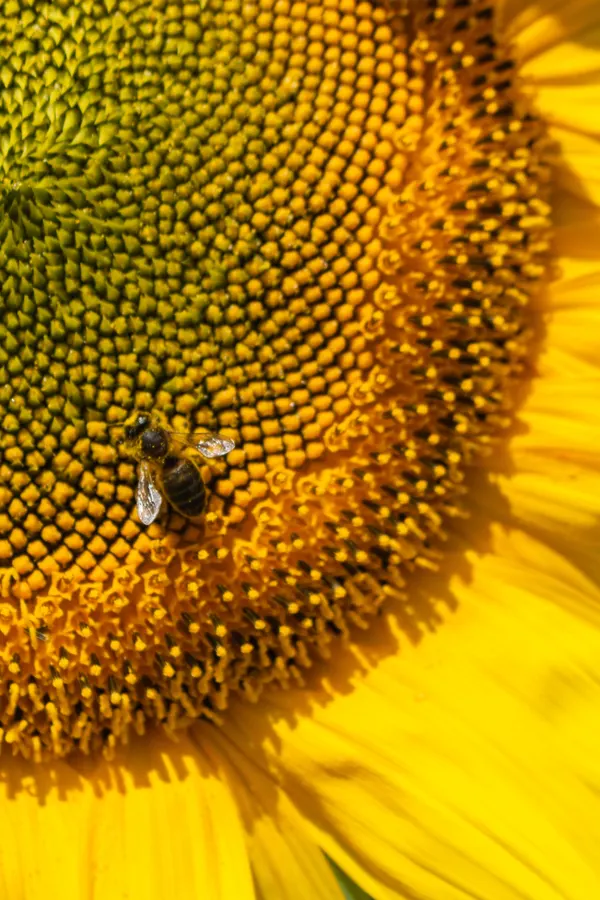
You can find sunflowers as short as a foot tall on up to an impressive 15 feet tall! While taller varieties often need staking or protection from wind, they can make a stunning impact on most properties.
Another great advantage to growing sunflowers is that they are easy to germinate from seed. And, you can harvest seeds once their blooming period is over and the heads have started to dry out.
While sunflowers feature faux petals around their large heads, each individual seed within the head also has a petal attached. These small petals and the large landing strip of the bloom are the perfect combinations to attract and keep honeybees around.
Lantana – Six Annual Flowers That Attract Honeybees
Lantana features multiple tiny blooms that make up a one to two inch spherical flower head. The little bloom for each flower head come in a different range of colors. This makes lantana one beautiful explosion of color no matter where it is planted.
The blooms can range in color shades of purple, orange, red, yellow, and white, making them a fantastic choice for attracting honeybees. The best part is that lantana can bloom from the end of spring all the way up to the first frost.
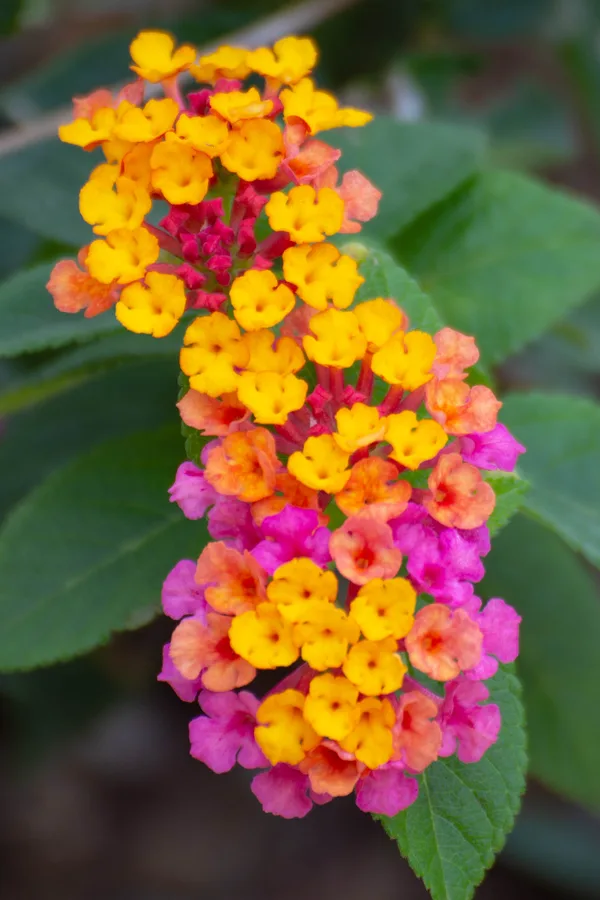
Lantana varieties come as short as 12 inches tall and go all the way up to 5 or 6 feet tall in height. Add their stunning color options to the fact that lantanas are drought resistant, and you’ve got the perfect summer flower that can really thrive in the heat of the sun!
Calendula – Six Annual Flowers That Attract Honeybees
Also known as pot marigolds, these flowers are actually considered herbaceous perennial herbs. However, they are grown in most locations as an annual.
Calendulas feature daisy-like blooms that prefer full sun or partial shade. Their blooms typically come in honeybee-friendly shades of orange, yellow, pink, and cream. A neat bonus of calendula is that the blooms and leaves are actually edible.
Most calendula varieties grow between 12 to 24 inches tall when directly planted in your garden. They also work as excellent potted plants, too, but they won’t grow quite as large.
Zinnias – Six Annual Flowers That Attract Honeybees
Zinnias are one of the easiest flowers to grow from seeds and one of the most rewarding. Known as a cut-and-come-again flower, these annuals will produce enough blooms for the honeybees as well as for you to cut and enjoy as tabletop displays!
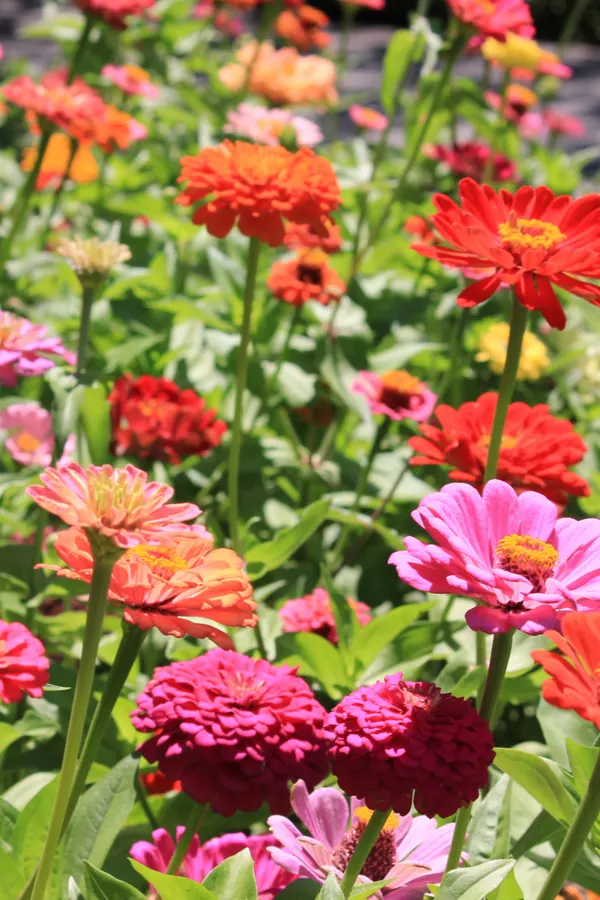
As long as zinnias receive plenty of sunlight and good airflow, they will bloom all season long. Colors range from red, pink, purple, green, orange, yellow, and white. Blooms can be up to 5 inches across in size, which can make for a stunning impact in gardens!
Zinnia blooms can come in multiple different bloom shapes and styles, but honeybees tend to prefer single-flowered heads. These types of blooms feature fewer petals and make it easier for honeybees to get to the beneficial pollen.
Declining Bee Population – Helping The Bees!
The population of honeybees and other bees have started to decline in recent years. Thankfully, there are a few things you can do in order to help provide not only food but a safe place for bees to survive.
Create A Natural Habitat
In order to help persuade honeybees to not only visit your property but to live there, you can help create an inviting area. Provide small brush piles or wood piles on the perimeter of your property. Just be sure to keep them away from active living spaces. While honeybees aren’t looking to sting humans and pets, it is still a possibility.
Also, keep the grass in that area taller and unmowed. This will also allow more of the native plants and flowers to grow in that area. That makes them another great attractor to honeybees!
Avoid Pesticides
While pesticides may be great at eliminating unwanted insects, they are not biased. Simply put, they will also kill beneficial honeybees and other pollinators. Even some pesticides that are listed as “all-natural” can be harmful to honeybees.
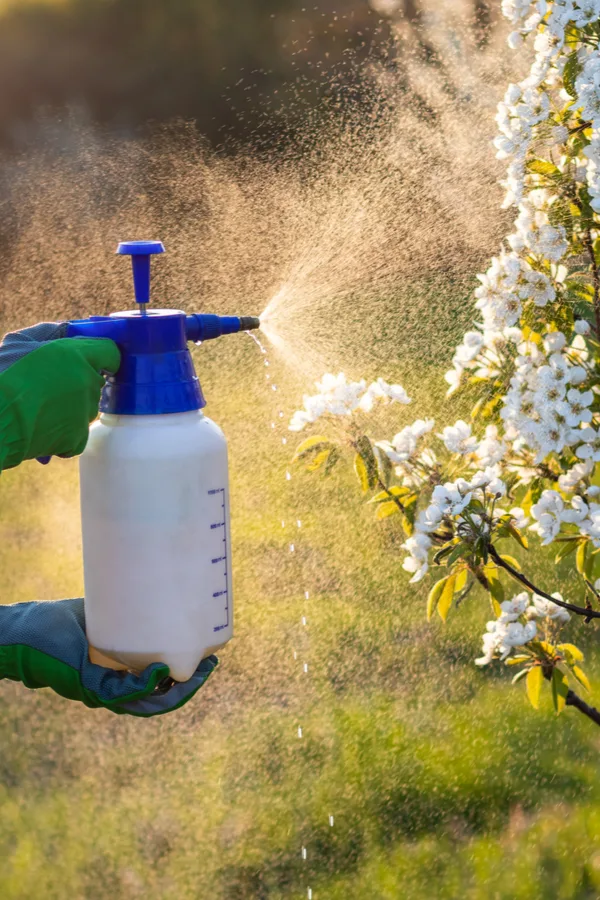
Control pest issues with natural methods like using row covers, implementing crop rotation each year, and using sacrificial crops. If you absolutely must use a pesticide, make sure it won’t affect honeybees prior to using. Neem Oil is the best all-natural choice for this.
Consider Bee Keeping
You don’t have to live in the middle of the country in order to practice beekeeping. Check with your local city ordinances to see if it is possible to keep a hive or two in your backyard.
Beekeeping is a great way to help increase the honeybee population. It’s also a fun project and learning experience for families and individuals. Many farm and livestock stores carry beekeeping equipment. Just be sure to do some research and to learn your local laws before starting.
Plant To Attract Honeybees
In addition to using the six annual flowers listed above, consider these other growing tips when it comes time for planting.
Native plants and flowers attract many different types of bees. A great bonus to using these plants is that they are perfect for your specific growing location. Check with local extension offices or garden centers to see what varieties they have on hand.
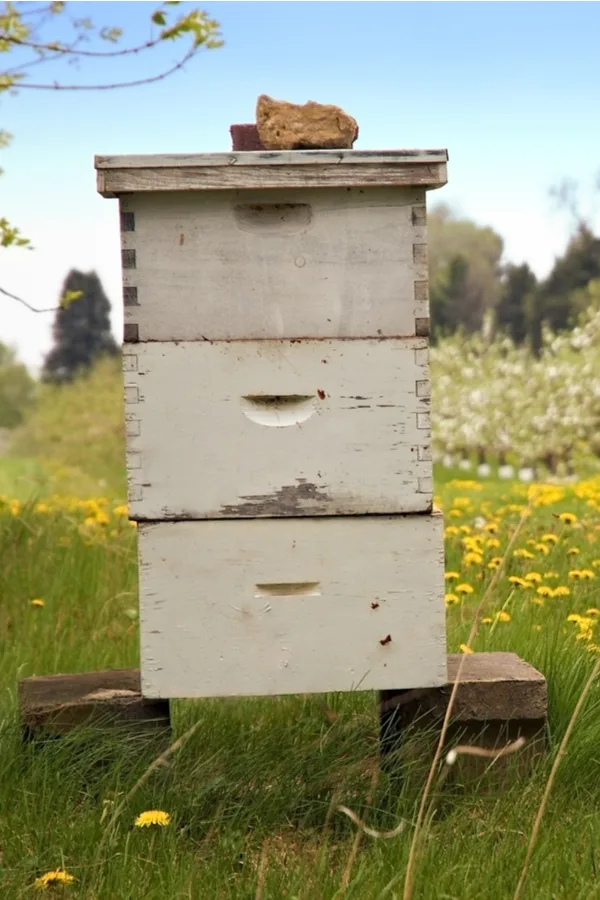
Be sure to use a wide variety of colors and bloom shapes when choosing your flowers. Pick a variety and not just one main hue. Yellow, purple, blue, and white flowers tend to be favored by honeybees over other colors.
Also, be sure to include plants that bloom at different seasons throughout the year. Honeybees will start to emerge from their hive as soon as the weather warms up in early spring. During this time, they will be on the lookout for a food source.
In addition, don’t forget about late fall. Most flowers are done blooming in the late summer. However, honeybees will still need a food source until the weather turns cold and drives them back into their hives for the winter.
To Conclude…
With all of these colorful and heavy blooming annual flower options, you are sure to be able to find a few to add to your property this year! Once planted, it’ll be only a matter of time before you are not only enjoying their beautiful blooms, but also the addition of multiple honeybees quietly buzzing around all your garden plants as well!
Follow Our Facebook Page For Even More Great Tips! Simple Garden Life Facebook Page
Simple Garden Life is a website dedicated to keeping gardening fun, simple and enjoyable! We publish two new articles each week along with a new garden podcast episode every two weeks. This article may contain affiliate links.
